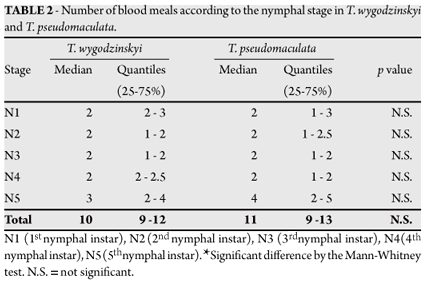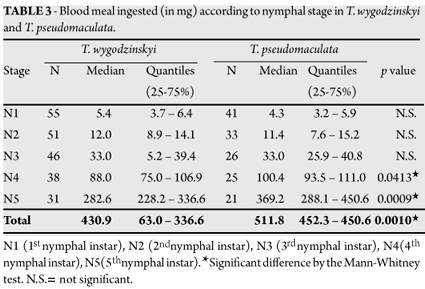INTRODUCTION: Triatoma pseudomaculata and T. wygodzinskyi (Hemiptera: Reduviidae: Triatominae) are two Brazilian vectors of Chagas disease. The first is an arboricolous species in sylvatic environment and considered a vector of T. cruzi in peridomestic structures; the second, a rupicolous species in the wild environment of no epidemiological importance. In order to test the assumption that sister species share biological traits, comparative studies of their development cycle and blood ingestion were conducted. METHODS: Eggs laid by five field females of each species were randomly selected. The nymphs were observed daily and fed on mice weekly. The time required to pass through the different stages to adulthood was recorded in days. The triatomines were weighed individually before and after feeding. The mortality rate according to each nymphal stage was calculated. RESULTS AND CONCLUSIONS: Analysis of the results shows that they display only minor biological differences even though they exhibit a distinct ecology. This suggests that the biological traits are important criteria to determine the relationship between species.
Triatoma wygodzinskyi; Triatoma pseudomaculata; life cycle; feeding behavior





